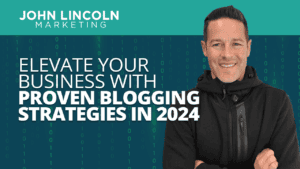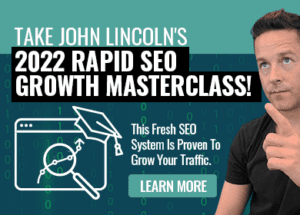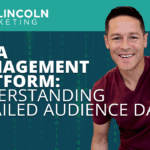PPC List: Ad Networks and Terms You Need to Know

PPC Terms
Ad Attribution
Ad attribution tells you which ads are doing the best job of driving traffic to your site.
Ad Extensions
Search Ads appear in the Google search results when people search for a term relevant to your brand.
Without ad extensions, your ad will still appear. But the users will just see the title of your ad, the URL, and the description.
With extensions, you can include more helpful info, like business hours or a direct contact link.
Ad Group
An ad campaign includes one or more ad groups.
Each ad group in a specific campaign shares a similar target or theme.
Ad Rank
This is another one that’s specific to Google Search Ads. It refers to the position in the search engine results pages (SERPs) where your ad appears.
For example, if the Ad Rank is 4, then your ad appears in 4th position.
Ideally, you want your ad to appear in first position so people are most likely to click on it.
Ad Schedule
You can set the hours when your ad appears to people, defining the ad schedule.
Automatic Bidding
Sometimes, your ad network will handle bidding for you. That’s called automatic bidding.
It’s a useful type of marketing automation that enables you to focus on growing your business while letting the platform optimize your bids.
Banner Ads
The ads at the top of a screen on a website are called banner ads. They are not too tall, but usually as wide as the screen.
Behavioral Targeting
Behavioral targeting enables your ad network to run ads only in front of people who show an interest in what you’re selling.
Bid
The bid is how much you’re willing to pay for a click on a PPC ad.
A high bid means your ad will more likely appear. But it also means your advertising and conversion costs will increase.
Broad Match
Broad match means users don’t have to match the exact keyword you’re targeting to see your ad. If they add a couple of extra words or express the same thoughts with synonyms, your ad can still show up.
Click-Through Rate
Sometimes abbreviated CTR, the click-through rate identifies how many people who saw your ad actually clicked on it.
It’s expressed as a percentage. The higher the number, the better.
Conversion Rate
The conversion rate identifies how many people visit your landing page and then take the action you want them to take (like a make purchase).
Again, it’s expressed as a percentage. And higher is better.
Conversion Rate Optimization
Conversion rate optimization is the process of updating your landing page to maximize the number of conversions.
Cost Per Acquisition
Cost per acquisition answers the question: How much does it cost to acquire one customer?
In this case, the lower is better.
CPM
CPM stands for forecast per thousand impressions. That means you pay a rate for every 1,000 times your ad appears on a web page.
Daily Budget
Your daily budget identifies the most amount of money you’re willing to spend each day on advertising costs.
Display Ads
Display ads are the ads that you see in sidebars and at the top of web pages. They’re called display ads because they usually include images instead of just text.
Dynamic Ads
Dynamic ads give you the ability to include a few different images with some different text. Then, the ad network uses an algorithm to determine the combination that gets you the most clicks.
Exact Match Keywords
Users have to enter the exact phrase (or one of the phrases) you’ve identified. Otherwise, they won’t see your ad.
Pixel (Facebook or Google)
Pixels are pieces of code that you put on your website so that the ad platform can track user behavior. They’re a great way to optimize your ad campaigns.
Manual Bidding
In contrast to automatic bidding, manual bidding is when you specify the maximum that you’re willing to pay for a click.
Negative Keywords
Negative keywords are words and phrases you identify in your Google Ads Search campaign. When a user’s search includes any one of those words or phrases, your ad will not appear.
Phrase Match
Somewhere between exact match and broad match. It means Google will show your ad with the keyword you specify, even if there are other words and phrases around it.
PPC
PPC stands for pay-per-click. It’s an ad you run when you pay every time someone clicks on it.
Quality Score
It’s an overall ranking of your ad. Search engines use it to determine your ad’s placement in the results pages.
Remarketing
Is a strategy that enables you to run ads to people who’ve shown an interest in your brand.
For example, if people visited your website, they’re likely interested in what you’re selling. You can run ads that appear to those folks.
Search Ads
Ads that appear in the search engine results pages. They’re typically driven by matching keywords.
SEM
It stands for Search Engine Marketing. It’s a combination of search engine optimization and search ads.
Ad Networks
Now that I’ve covered the ad terms, I’ll cover the various ad networks you can use to get the word out about your business.
Amazon
Amazon, like Google, offers a variety of advertising options:
- Amazon Search
- Amazon Sponsored Products
- Amazon Sponsored Brands
- Amazon Sponsored Display
- Amazon DSP
The ecommerce giant also offers plenty of resources online to help you get the most out of your ad spend.
Apple Search Ads
Apple Search Ads appear on the results page of the Apple App Store.
The best reason you might want to run an ad in the App Store is when you’re marketing an iOS app.
Bing
Bing is the “other” search engine. Don’t neglect it because people do use it.
Criteo
It’s an excellent ad network if you’re in the ecommerce space. It’s also got an AI engine that ensures your ads get to the right audience.
Better for B2C advertising. It’s also a great place to attract people at the top of the sales funnel.
Within Google alone, you have numerous options, including:
- Search ads
- YouTube ads
- Display ads
- Discovery ads
Google also offers a goal-based campaign called Performance Max. It combines the various ways you can advertise.
LinkedIn might be the best way to advertise online if you’re in the B2B space.
Native Ads
Native ads look like content on a website, but they’re really ads that take people to another site.
Taboola and Outbrain are two of the best options if you’re into native advertising.
If you’re interested in transforming your display ad into a Pin, you can reach people on Pinterest. And you can target potential customers based on interests.
Programmatic Advertising
If you’d like to focus on building your business and let software do all your ad-buying, then consider programmatic advertising.
Take a look at mntn (formerly Steelhouse), TradeDesk, and Amazon DSP.
Quora
The question-and-answer website lets you advertise to people who ask specific questions. Think about the kinds of questions people in your market might ask and consider running some ads.
Since there’s a subreddit for almost any topic you can think of, there’s probably one that includes people in your target market. Why not try reaching them with an ad?
Snapchat
Snapchat is a great place to reach the young’uns. But it’s also suffered some setbacks recently, so be sure to put in some due diligence.
TikTok
As it stands right now, TikTok is one of the most popular social media platforms in the world. Chances are good that you’ve got a target audience there.
And the company keeps updating its ad platform.
Yelp
If you’re running a local business, Yelp is a great option to get some more foot traffic into your store.
Wrapping It Up
By now, you should have a better understanding of ad network terminology.
Armed with that info, feel free to take a look at one or more of the ad networks above. Then, launch campaigns that will reach people in your target market.
Welcome To John Lincoln Marketing
Welcome to John Lincoln’s personal website. On this website, we offer courses by John Lincoln, review software, publish articles and videos. You can also learn about John Lincoln’s books, films, book him to speak and contact him. John is directly associated with many of the businesses mentioned on this website and freely discloses this information.
About the Author

John Lincoln is CEO of Ignite Visibility, one of the top digital marketing agencies in the nation. Ignite Visibility is a 4x Inc. 5,000 company. Ignite Visibility offers a unique digital marketing program tied directly to ROI with a focus on using SEO, social media, paid media, CRO, email, Amazon and PR to achieve results. Outside of Ignite Visibility, Lincoln is a frequent speaker and author of the books “Digital Influencer” and “The Forecaster Method.” Lincoln is consistently named one of the top digital marketers in the industry and was the recipient of the coveted Search Engine Land “Search Marketer of The Year” award. Lincoln has taught digital marketing and Web Analytics at the University of California San Diego since 2010, has been named as one of San Diego’s most admired CEO’s and a top business leader under 40. Lincoln has also made “SEO: The Movie” and “Social Media Marketing: The Movie.” His business mission is to help others through digital marketing.
Get Social
Recent Tweets
Contact John Lincoln
Want to get in touch with John Lincoln? Click Here To Reach Out.
Related Posts

The Ultimate Guide to Conversion Rate Optimization for Any Business
Whether you’re a seasoned marketer or just starting out, conversion rate optimization (CRO) is a powerful tool that can boost your sales, leads, and overall

16 Questions to Help You Choose an SEO Company
Feeling overwhelmed by the sea of SEO companies out there? You’re not alone! Choosing the right partner is crucial for achieving your online marketing

Elevate Your Business with Proven Blogging Strategies in 2024
In 2024, business blogging is not only still relevant – it’s a critical component of any content marketing strategy. Companies that blog generate 67% more

